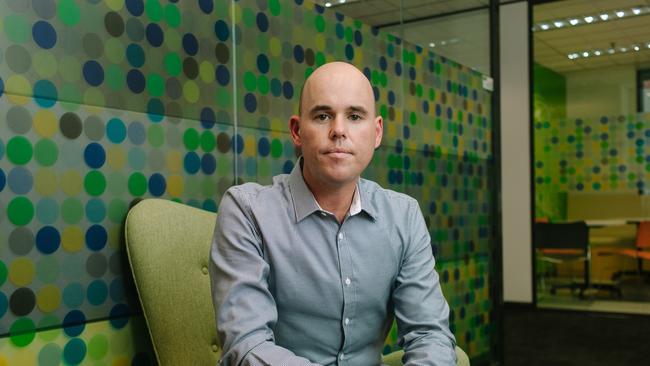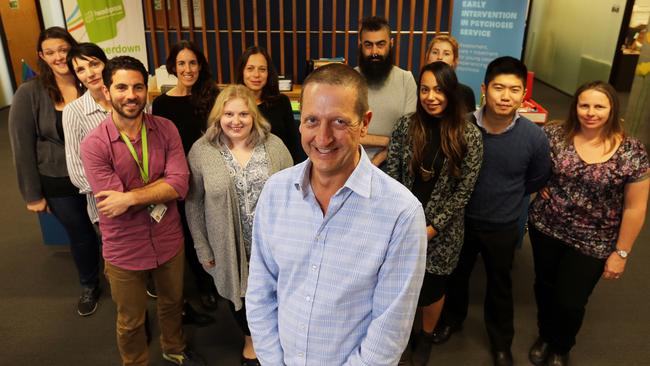‘Snakes and ladders’: systemic failings leave two-thirds of headspace patients unaided
The majority of headspace users see no improvement to health outcomes, and its chief executive is appealing for structural reform to change that.

Australia’s leading youth mental health service, headspace, is under strain, structurally inadequate and delivering no tangible difference to health outcomes in the majority of cases, research shows.
A study by the University of Sydney found headspace was “a victim of its own success”, becoming so overlogged with cases amid a national rise in youth mental health issues that only one-third of patients were improving after receiving care, with the rest seeing no improvement or further deterioration.
Headspace chief executive Jason Trethowan said his organisation needed a radically different funding model from the commonwealth, calling for the system of Medicare rebates to be phased out in favour of dedicated funding that could hire long-term staff rather than a bevy of contractors.
“When you’ve got young people presenting … our capacity to respond to all of their needs will be dependent on the resources that we have, but also importantly, the resources and access to services of our partner organisations, like state health services,” he said.
“We talk about young people’s complex needs, but the mental health system itself is complex, so when you start getting bounced around to different parts of the system, that inevitably means you’ll be telling your story multiple times.
“We try all sorts of digital services and we complement them with face-to-face services. That’s happening a lot across the board, but we do need to continue to work on growing the workforce and placing investment in services that will actually result in young people getting on top of those issues earlier in life.”
Headspace has seen its clinical capacity decline in the past five years due to competitive price offers from private health services.
The analysis was led by psychiatrist Ian Hickie and youth mental health researcher Frank Iorfino, before being published in the Australian and New Zealand Journal of Psychiatry.

Professor Hickie said the fundamental problems with headspace could not be fixed through a funding injection and state, federal, public, specialist and private health services would all need to figure out how to solve the system-wide “game of snakes and ladders” allowing patients to fall between the cracks of health services.
“More people come into the system, the system is more overwhelmed and does a less good job with the people who are there,” he said. “We just tend to open more doors, open more clinics, open more centres. We do something with the assumption that doing anything will make a difference, any care will matter. But frankly, if you don’t recognise the problems you’re dealing with, you can’t continuously improve the system.”
According to the Lancet Psychiatry Commission on Youth Mental Health, conditions in young people have risen 50 per cent in the past two decades, accelerating under the pandemic.
“We’re about to see this in the election period. Again, the usual thing is to open another headspace centre, or to open another doorway or another mental health clinic that provides an open door but it doesn’t provide the services you need behind that door and doesn’t have the smart IT systems behind it to connect people to adequately assess their needs and then track whether those needs are being met,” Professor Hickie said.
“We remain technology dumb, system dumb. We are hopeless. Every other industry has been transformed by digital infrastructure – think about transport, accommodation, services, travel. Five years ago I wrote about the Uber-isation of mental health assuming that it would happen … but the truth in Australia is we’ve got state systems that only talk to themselves.”
Professor Hickie said issues of system co-ordination and patient data extended inside headspace, with their study marking inconsistencies in how it categorised the proportion of visitors and callers with severe mental disorders.
A 2023 headspace study showed almost half of headspace clients had no significant risk factors; the year following, that same proportion was rated as having severe levels of psychological distress.
“Headspace is a victim of its own success. It’s also a victim of what other things have happened over the life of it, since it was originally conceptualised almost 20 years ago,” Professor Hickie said.
“We’ve got to find ways of connecting those in most need, and many of them are coming through the doors of headspace centres to real care, care that really makes a difference.”



To join the conversation, please log in. Don't have an account? Register
Join the conversation, you are commenting as Logout